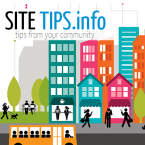(BPT) - For parents today, the rapid pace of technological change can seem overwhelming. Watching your kids adapt - usually more quickly than you do - to these changes can also cause anxiety. The sudden emergence of AI has accelerated these worries, with many parents wondering how to ensure their children use tech tools safely, responsibly and in a way that doesn't negatively impact their well-being and development.
Recent data shows that most teens use AI, and more often than their parents realize. Considering its prevalence in the context of the ongoing decline of student achievement nationwide, it's important for parents to help their kids understand when to use, and when to avoid, AI so as not to undermine the skills they'll need for successful careers.
Concerned parents can introduce their children to the concept of digital citizenship, which empowers young people to take control of their digital lives as they use social media, AI or other tech tools. It's important to discuss appropriate behaviors and norms for using devices and participating in digital spaces, so everyone can be safe, responsible and respectful online.
Although these ideals are fundamental to being a good citizen in general, the digital landscape offers more opportunities for missteps and abuse, since digital footprints are public, pervasive and often permanent. Responsible digital citizenship can encompass everything from recognizing and preventing harms like cyberbullying, hate speech and plagiarism to protecting privacy, safety and security.
To help educators, parents and caregivers feel better equipped to guide children through the challenges of today's technology, Renaissance, a global leader in pre-K-12 education technology, provides high-quality digital citizenship lessons and resources through its interactive Nearpod platform.
In honor of Digital Citizenship Week, Renaissance offers the following four tips for adults to help kids use technology responsibly, both in and out of school.
1. Learn about AI policies
To provide consistency between home and your children's school, and to better understand the school's approach, ask teachers and school administrators about their AI policies.
Clarify what safeguards exist at school and if they teach AI literacy skills. If not, you might suggest they try Nearpod's 21st Century Readiness Program, which equips educators with lessons to help students understand what AI is, how it works, explore its potential benefits and risks and develop critical thinking skills to use AI responsibly.
By learning about the school's approach to AI, you'll have a better understanding of your children's exposure to AI in their education and daily life.
2. Talk frankly about AI
Encourage honest conversations with your kids about what AI does well, and what it doesn't do well. Include examples of how you use the technology, whether at your workplace or at home. This could include everything from chatbots and AI searches to photo filters and more.
It's best to be transparent to build trust with your kids. Young people may worry they'll be judged for using AI, preventing them from feeling free to discuss how they use it. Let them know you're aware of how much young people already use it and that you're open to talking about its benefits and potential drawbacks.
Closing this parental awareness gap is crucial for the conversation. You may not realize it, but research shows families may have as much or greater impact than teachers and peers in shaping their children's educational attitudes and success.
3. Stress the importance of critical thinking
Help your children understand that learning to write well, thinking about topics and trying to solve problems on their own are all crucial skills for future success. Letting AI do things for them means skipping vital steps in their education and development.
Start by helping your children question AI results. While generative AI models can produce confident-sounding responses, they may have inaccuracies or biases. Show your kids how to ask a question and then question the answer - by learning how to double-check AI's responses using reliable sources (and how to identify reliable sources). To learn actionable tips for helping your children practice critical thinking rather than outsourcing it to AI, check out these practical AI literacy tips for educators and families.
4. Consider the global impact
As part of your discussion, talk about AI's risks, limitations and possibilities in age-appropriate ways, and how its use might shape the future in terms of education, jobs and how people interact and create. Most importantly, establish norms or guidelines for using AI responsibly in your family. Recent National Assessment of Educational Progress (NAEP) data shows student development is at risk, which underscores the importance of ensuring that kids spend adequate time learning and practicing the reading and math skills they'll need for college and a career.
Since technology and AI products are used more often in schools and educational settings today, it's critical for children to learn about responsible AI use so they'll be ready for the future. However, AI use has to be balanced with children developing independent thinking and learning skills, or they risk losing the ability to do so effectively.
To consider how you might further help your children learn about digital citizenship and AI literacy at home, check out Nearpod's free lessons for Digital Citizenship Week, which provide tools to support children in developing the skills they need to use devices safely, ethically and effectively, so they can think critically and participate responsibly in the digital world.
